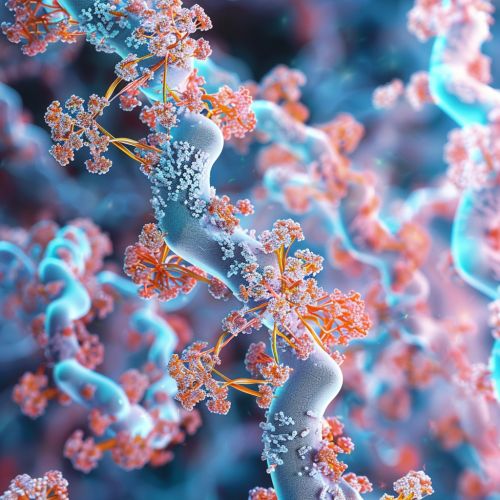Ras superfamily
Introduction
The Ras superfamily is a group of related proteins that is expressed in all cell types and is involved in transmitting signals within cells. These proteins are related in structure and are all involved in a variety of cellular processes. The Ras superfamily is divided into five main families, including the Ras, Rho, Rab, Arf, and Ran families.
Structure
Members of the Ras superfamily are small GTPases. They are monomeric, globular proteins that bind to guanosine triphosphate (GTP) and guanosine diphosphate (GDP). The structure of these proteins allows them to act as binary switches, cycling between an inactive GDP-bound state and an active GTP-bound state. This switch is regulated by GTPase-activating proteins (GAPs) and guanine nucleotide exchange factors (GEFs).


Function
The Ras superfamily proteins are involved in various cellular functions. They play crucial roles in cell growth, survival, and differentiation. They also participate in the organization of the cytoskeleton, the production of lipids, and the trafficking of proteins and lipids between cellular compartments.
Ras Family
The Ras family proteins are best known for their role in relaying signals from growth factors to the nucleus. This family includes the H-Ras, K-Ras, and N-Ras proteins, which are commonly mutated in human cancers.
Rho Family
The Rho family proteins are involved in the regulation of the cytoskeleton. They play a key role in cell migration, adhesion, and division. This family includes the RhoA, Rac1, and Cdc42 proteins.
Rab Family
The Rab family proteins are involved in the trafficking of proteins and lipids between different cellular compartments. They play a key role in the formation, movement, and fusion of vesicles.
Arf Family
The Arf family proteins are also involved in the trafficking of proteins and lipids. They play a key role in the formation of vesicles from the Golgi apparatus and the endoplasmic reticulum.
Ran Family
The Ran family proteins are involved in the transport of proteins and RNA molecules into and out of the nucleus. They play a key role in the assembly and disassembly of the nuclear envelope during cell division.
Clinical Significance
Mutations in the genes encoding Ras superfamily proteins are often associated with human diseases, especially cancer. For example, mutations in the K-Ras gene are commonly found in lung, colon, and pancreatic cancers. Mutations in the N-Ras gene are associated with melanoma, and mutations in the H-Ras gene are associated with bladder cancer.
